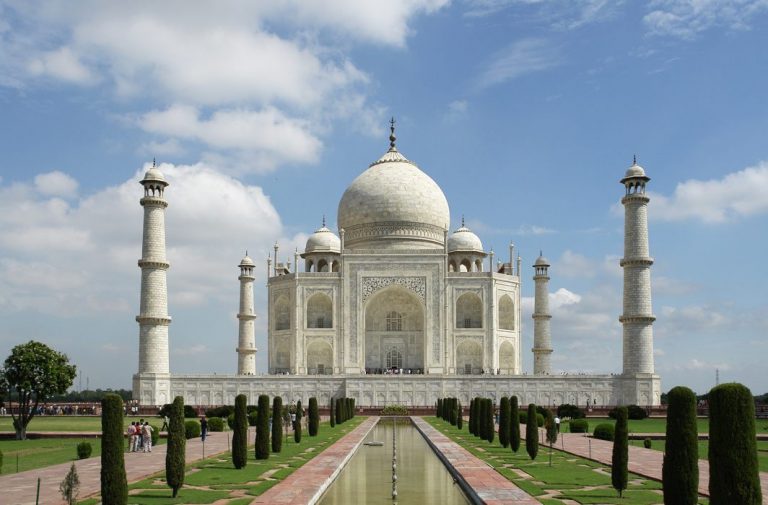
Above: Taj Mahal/ Photo Courtesy: Yann Forget/Wikimedia Commons
An interesting case about the ownership of the Taj Mahal has come up before the Supreme Court bench of Chief Justice Dipak Misra and Justices A M Khanwilkar and D Y Chandrachud. The issue is about the ownership of the Taj Mahal. Who owns it.
This is a petition that the Archaeological Survey of India (ASI) has brought against the Uttar Pradesh Sunni Central Wakf Board and others and the ASI is being represented by its Superintendent archaeologist. This is an ALP, filed against a judgment of the high courts. This writ has been filed as a PIL.
Senior Advocate Salman Khurshid, representing the Wakf Board said that if something has been used by the Wakf for a long time, even though no documentation exists, the court has (earlier) presumed it in the favour of the Wakf only.
In the case of the Taj Mahal, there shall be no bifurcation (regarding mosque and mausoleum) on the fact which is a Wakf property and which is not.
The whole issue is about who owns the Taj Mahal?
The argument by Khurshid is that the Wakf Board cannot own it, neither can the ASI. Both can act as a care taker of the property. Both are custodians and owner is the Almighty.
The matter has been listed for May 27 for final disposal.
The Wakf Board has claimed that Mughal Emperor Shah Jahan gave the ownership of Taj Mahal to the Wakf. The top court had asked for documents to be placed before it to buttress the demand of the UP Wakf Board. The court had said that a document bearing the signature of the Emperor has to be presented. This was not presented today.
The ASI had petitioned the court in 2010 against the Wakf Board’s July 2005 decision ordering that the Taj be registered as the latter’s property. There is a stay on the order.
While hearing that petition of the ASI CJI Misra had told the board: “Who in India will believe it belongs to the Wakf Board? These kinds of issues must not waste the time of the Supreme Court.
“When was it given to you? When did you come in? For over 250 years, the East India Company was in possession. After that it passed to the central government. The ASI has been in charge of managing it. It had the right of administration,” the CJI had said.
That was when senior advocate V Giri, representing the Wakf Board, said that Emperor Shah Jahan had executed a Wakfnama in favour of the board. The bench had then demanded that the board place the “original deed executed by Shah Jahan” before the court.
The CJI had asked another crucial question. “How did he (Shah Jahan) sign the Wakfnama? He was in jail and used to view the monument while in custody.”
The ASI informed the court that there was no such Wakfnama. “Under the 1858 proclamation, the properties taken from the last Mughal emperor, Bahadur Shah Zafar, were vested with the Queen,” their counsel said. “By a 1948 Act, the buildings were taken over by the Indian government.”
—India Legal Bureau

